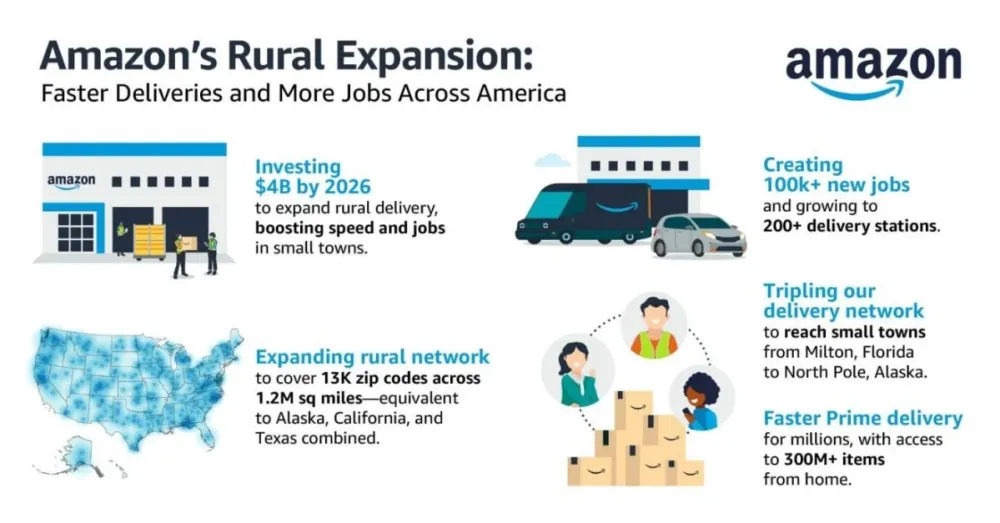
Amazon has announced a $4 billion investment aimed at expanding its delivery infrastructure across rural regions of the United States. This initiative seeks to enhance logistics efficiency in remote areas, ensuring swifter delivery of goods while simultaneously creating over 100,000 new job opportunities and stimulating local economic growth.
The company emphasized that the “last mile” of delivery—getting packages into the hands of customers—is a critical component of its e-commerce service. Amazon’s Prime membership has already redefined delivery speed standards, and while only about one million items were eligible for free delivery under Prime when it launched in 2005, that number has now surpassed 300 million.
Amazon’s logistics network is also supported by a diverse array of collaborative programs. Through the Delivery Service Partner (DSP) initiative, the company empowers small delivery businesses, while the Amazon Flex program enables individuals to earn supplemental income by delivering packages using their personal vehicles. Additionally, through the Hub Delivery community partnership model, Amazon works with local enterprises to fulfill deliveries, creating further employment and cooperative business opportunities.
In line with its vision, Amazon is committing $4 billion to deepen its rural logistics capabilities. The goal is to bring faster, more reliable delivery services to sparsely populated regions across the country, while generating over 100,000 new positions, including roles for independent drivers.
Following this investment, Amazon expects its delivery network to span more than 13,000 ZIP codes and cover approximately 1.2 million square miles—an area nearly equivalent to the combined size of California, Texas, and Alaska. This enhanced network will be capable of handling over one billion deliveries annually.
At a time when many logistics providers are scaling back efforts in rural expansion, Amazon is doubling down—literally. By the end of 2026, the company aims to double the scale of its rural delivery infrastructure, reaching even more remote communities. This expansion will grant residents in isolated areas access to over 300 million products online, with delivery times cut by nearly half compared to the past.
Amazon also estimates that each new delivery station will generate, on average, around 170 local jobs. These roles will be bolstered through continued growth in DSP and Amazon Flex partnerships. The company further emphasized that its delivery stations offer wages nearly triple the federal minimum and provide healthcare and other benefits starting on the employee’s very first day.
Amazon underscored that such investments not only advance its logistics goals but also serve as catalysts for economic revitalization in underserved rural communities, unlocking new avenues for partnership and development.


